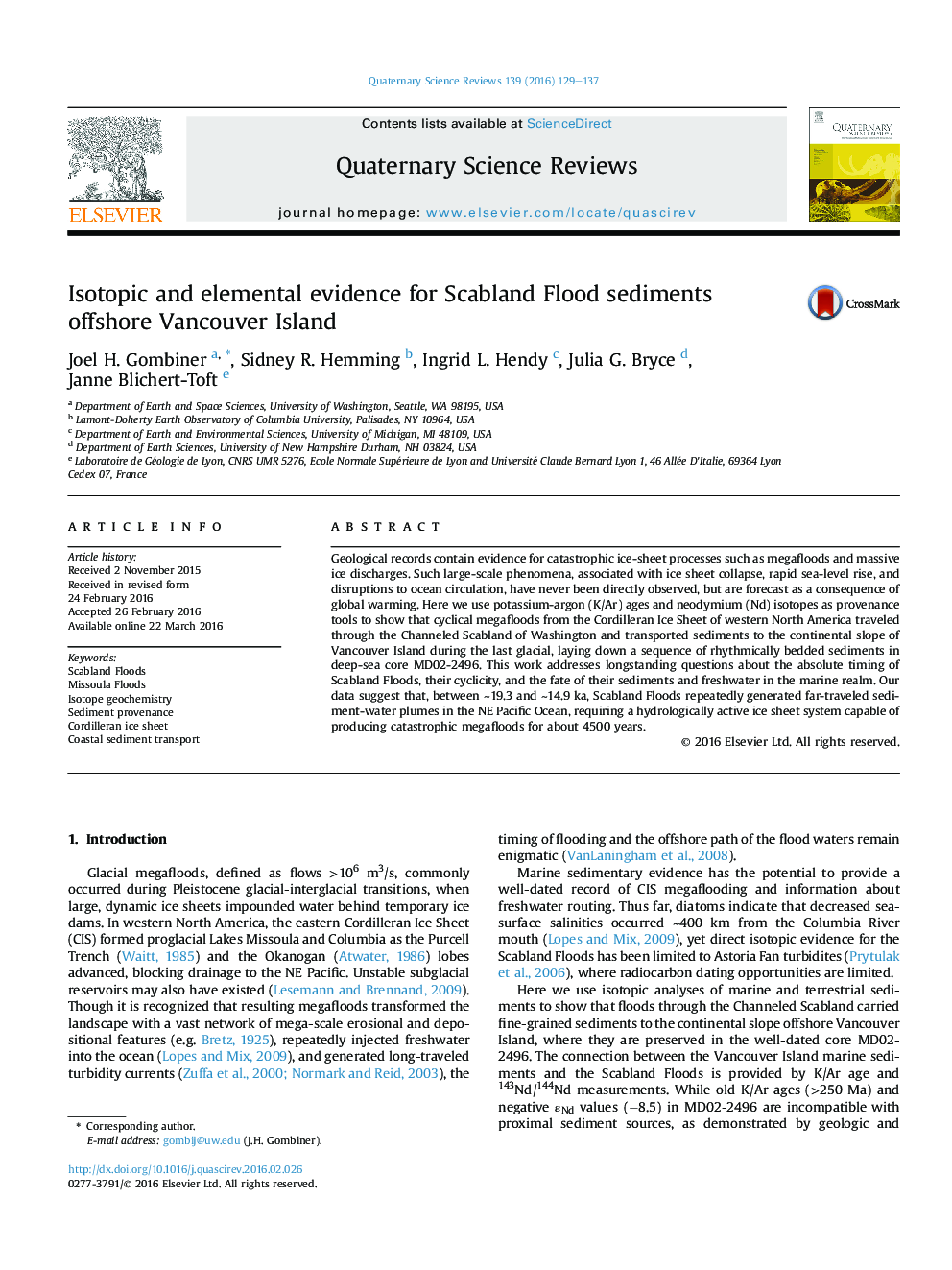| Article ID | Journal | Published Year | Pages | File Type |
|---|---|---|---|---|
| 6445431 | Quaternary Science Reviews | 2016 | 9 Pages |
Abstract
Geological records contain evidence for catastrophic ice-sheet processes such as megafloods and massive ice discharges. Such large-scale phenomena, associated with ice sheet collapse, rapid sea-level rise, and disruptions to ocean circulation, have never been directly observed, but are forecast as a consequence of global warming. Here we use potassium-argon (K/Ar) ages and neodymium (Nd) isotopes as provenance tools to show that cyclical megafloods from the Cordilleran Ice Sheet of western North America traveled through the Channeled Scabland of Washington and transported sediments to the continental slope of Vancouver Island during the last glacial, laying down a sequence of rhythmically bedded sediments in deep-sea core MD02-2496. This work addresses longstanding questions about the absolute timing of Scabland Floods, their cyclicity, and the fate of their sediments and freshwater in the marine realm. Our data suggest that, between â¼19.3 and â¼14.9Â ka, Scabland Floods repeatedly generated far-traveled sediment-water plumes in the NE Pacific Ocean, requiring a hydrologically active ice sheet system capable of producing catastrophic megafloods for about 4500 years.
Keywords
Related Topics
Physical Sciences and Engineering
Earth and Planetary Sciences
Geology
Authors
Joel H. Gombiner, Sidney R. Hemming, Ingrid L. Hendy, Julia G. Bryce, Janne Blichert-Toft,
